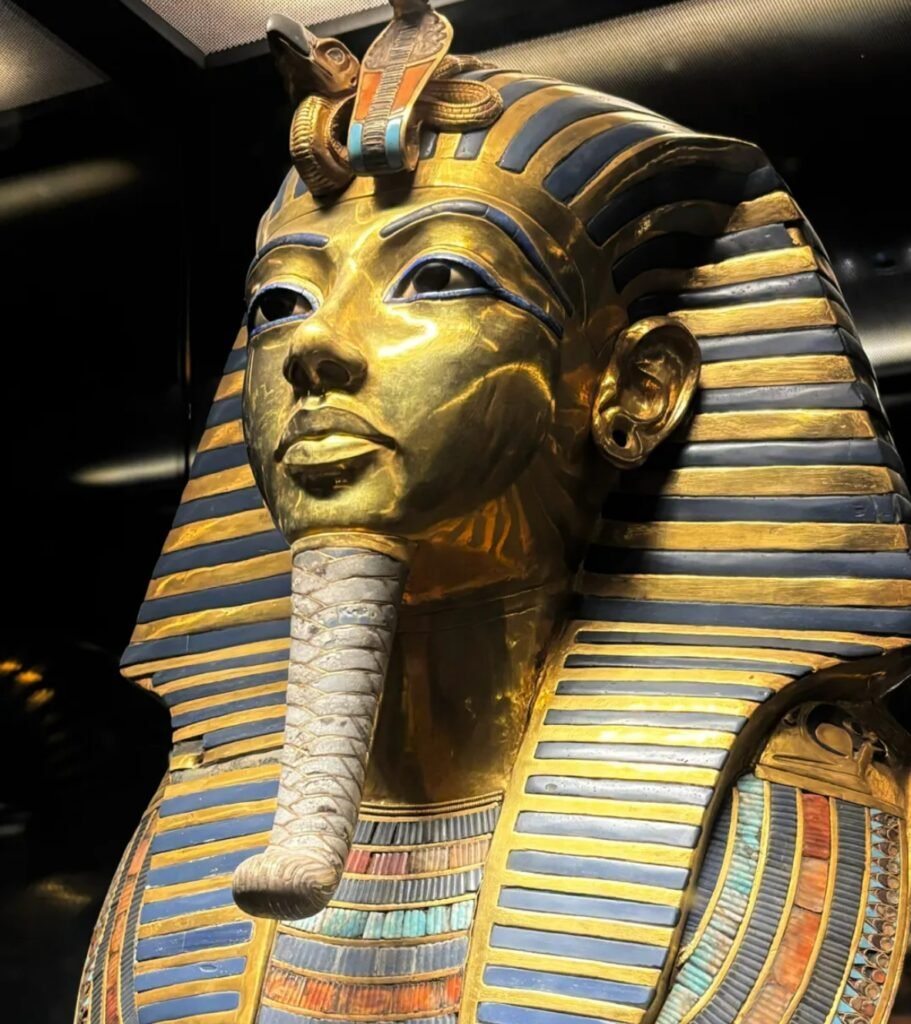
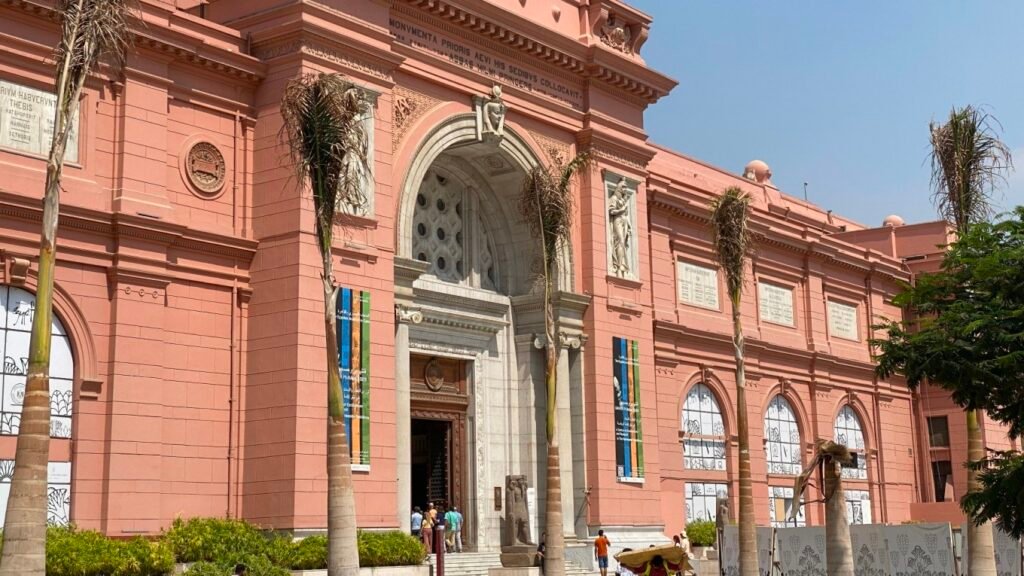
This two-story red building, completed and opened in 1902, is itself a historic artifact. The museum is divided into two floors, with the exhibit space designed by Mariette himself. The first floor is organized in a clockwise manner, displaying artifacts in chronological order. The second floor is divided into different galleries based on the type of artifacts. The most famous collection, the treasures of Tutankhamun, is located on the second floor. The museum’s centerpiece is in Gallery No. 3 on the second floor, while the mummy of Ramses the Great can be found in the Royal Mummies Hall on the same level.
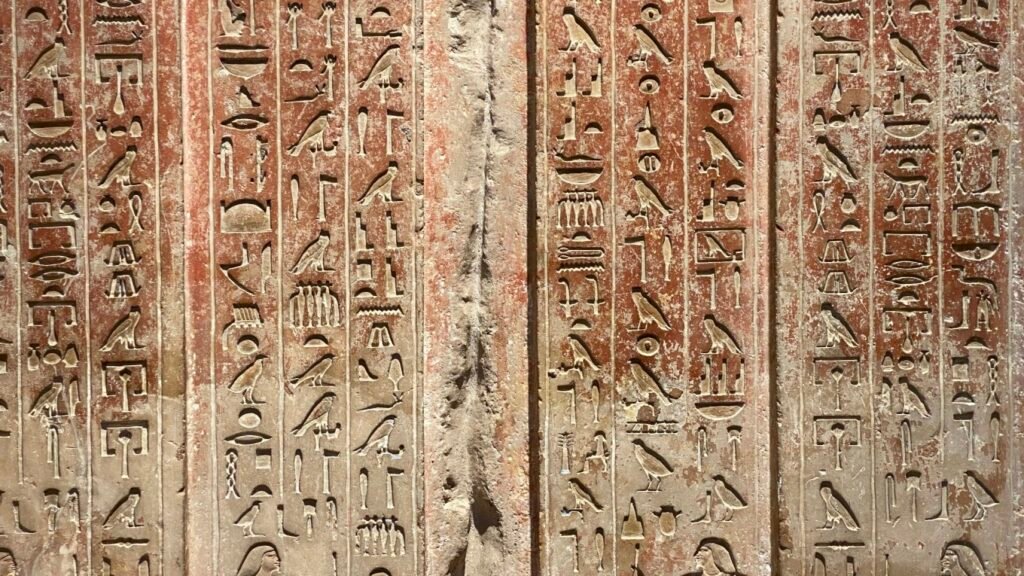
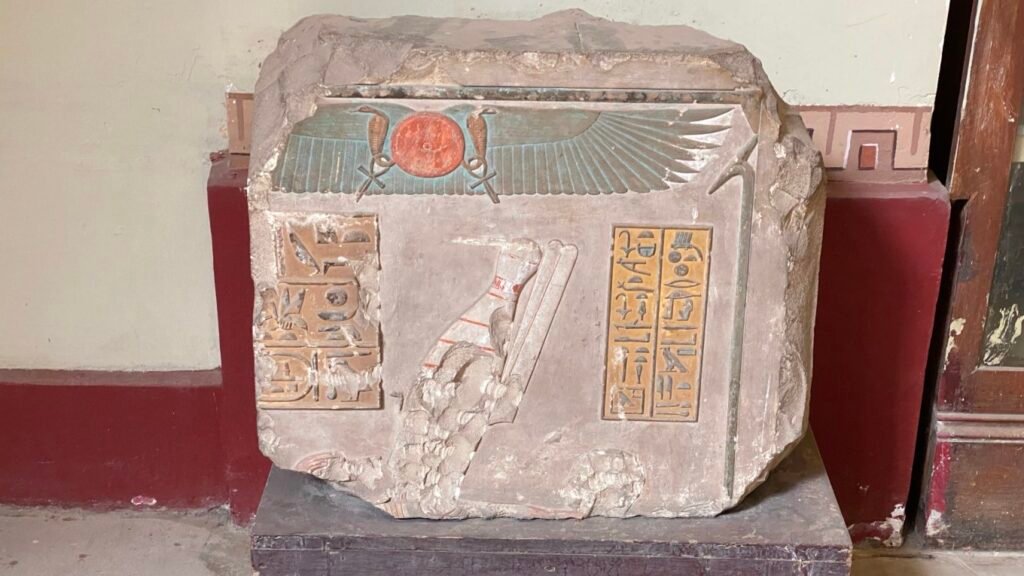
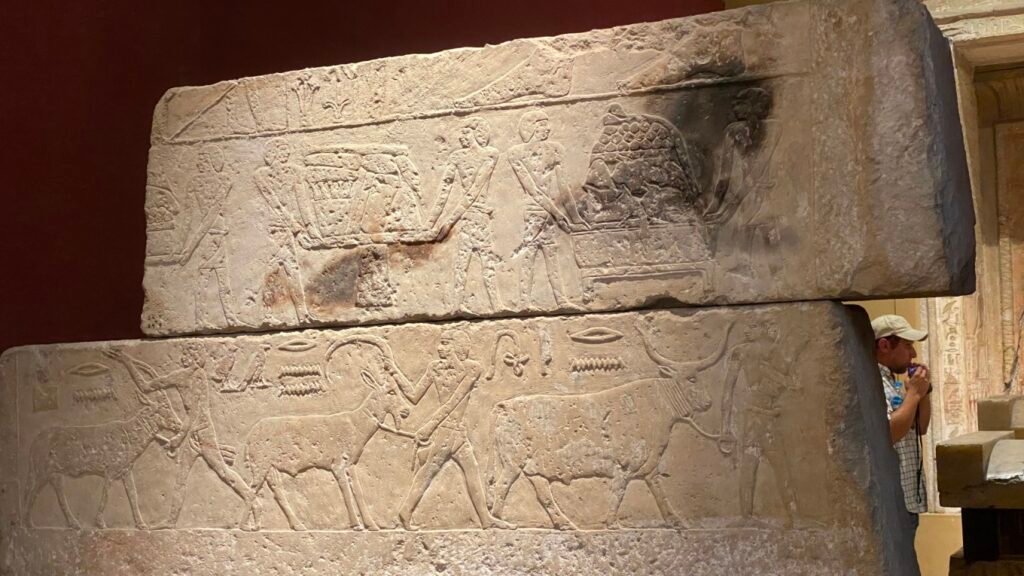
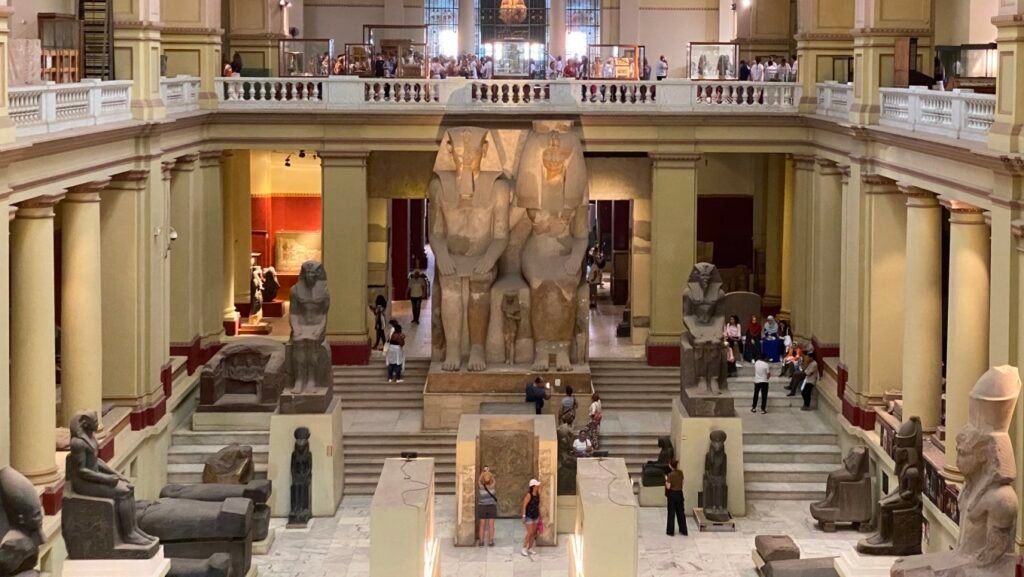
A statue from the 12th Dynasty depicts Amenemhat III as a dual figure, representing both his human and deified forms. The craftsmanship, particularly around the hips, is remarkably detailed. The entire statue can be seen as a portrayal of Amenemhat III as both the earthly pharaoh and the deified Nile god. As a divine figure, the pharaoh is depicted as the Nile god, the protector of the Nile River, which allowed the ancient Egyptians to cultivate agriculture and fishing, sustaining the lives of the people along its banks.
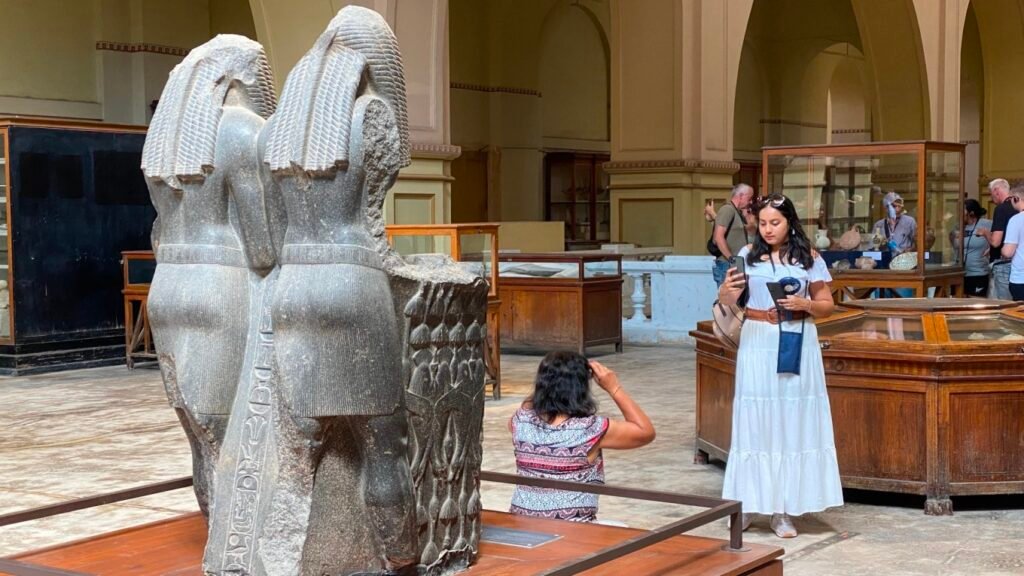
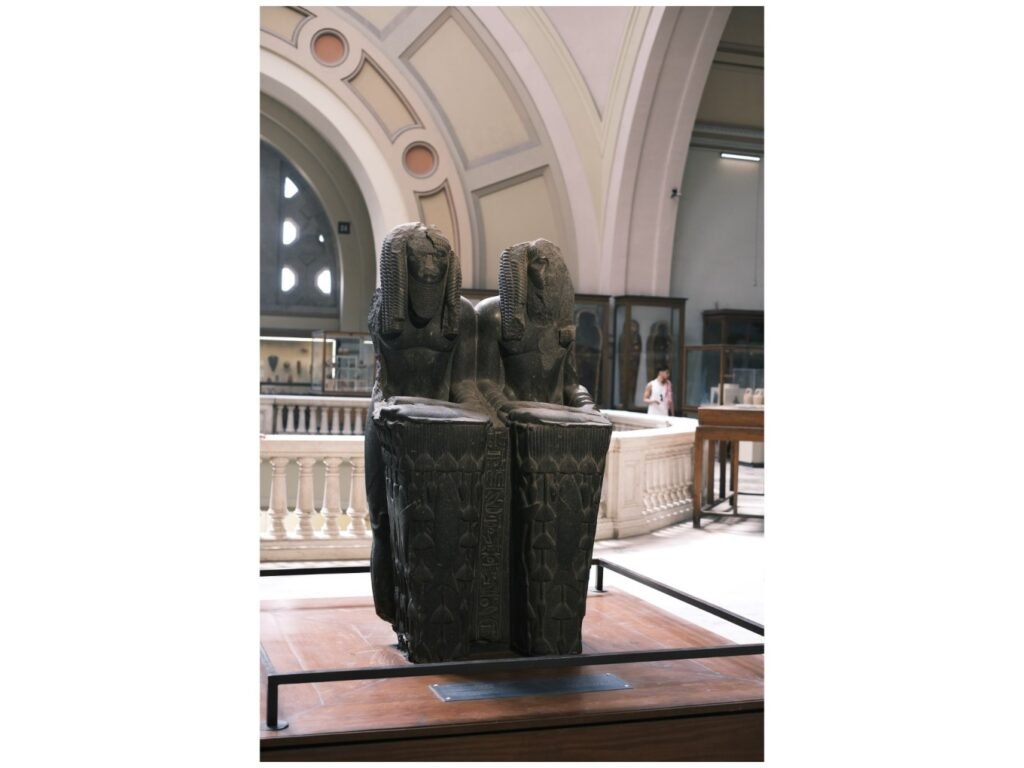

The entire body of the statue is intricately carved, including the back, where you can appreciate the sculpted, muscular buttocks and thighs. To maintain the symmetrical beauty of the dual figure, the sculptor made a unique choice: both outer legs of the dual figure are shown stepping forward. This breaks from the traditional ancient Egyptian art convention, where typically only the left foot is shown stepping forward.


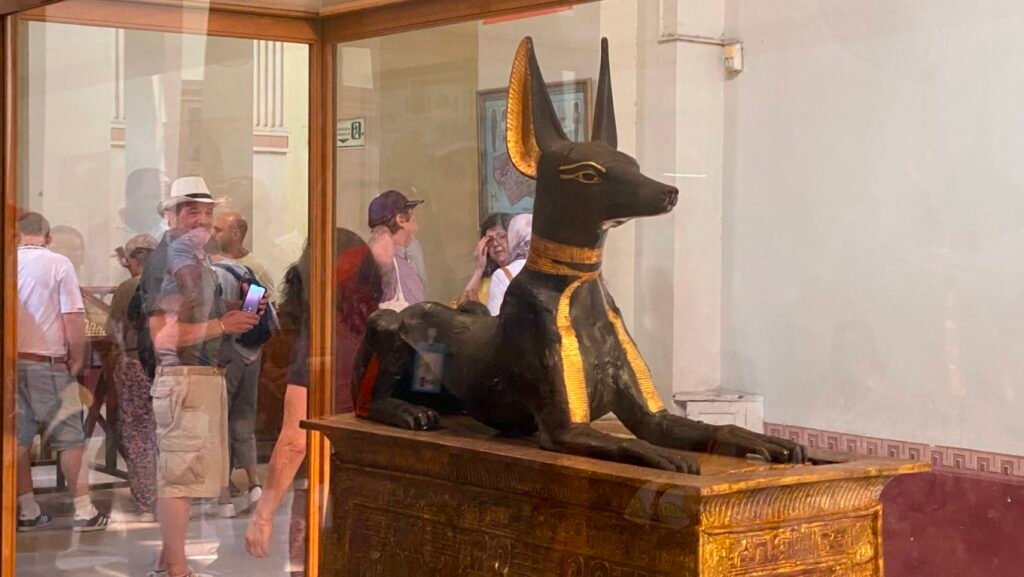
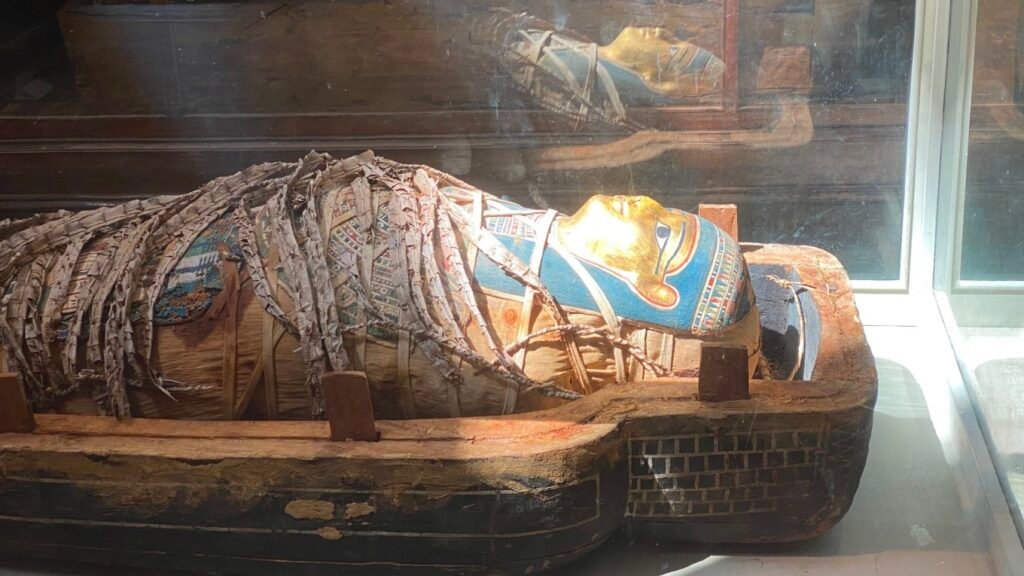

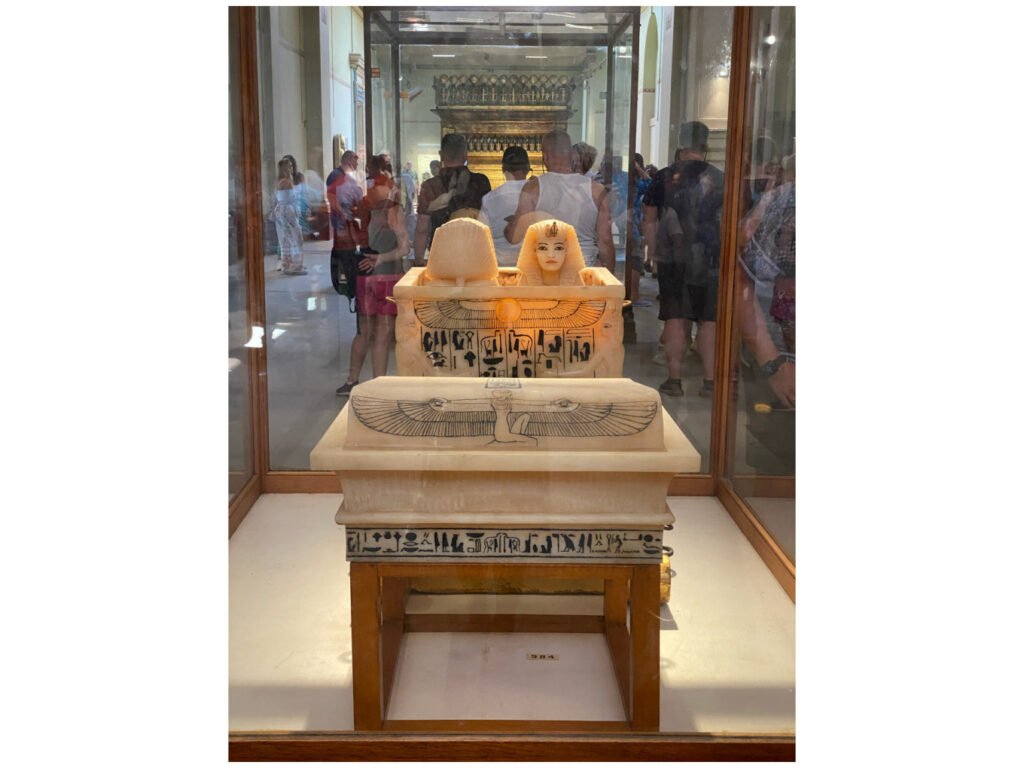

On the throne, the royal name still reads “Tutankhaton,” a name associated with the god Aten. The pharaoh sits relaxed on the throne, with his feet resting on a cushioned footstool. In front of him is Queen Ankhesenpaaton, who was later renamed Ankhesenamun after the restoration of the worship of Amun in ancient Egypt. The figures of both the pharaoh and the queen are intricately inlaid with colored glass, semi-precious stones, and silver. Both wear tall crowns atop their blue wigs, and large necklaces adorn their chests. The pharaoh is dressed in a pleated short skirt with a belt hanging in front, while the queen wears a pleated, sheer long dress that reveals the contours of her youthful body. Ankhesenpaaton is lovingly applying ointment (contained in a cup) to her husband’s shoulder, an intimate gesture clearly influenced by the art style of the Amarna period under Akhenaten. Above the scene, a golden sun disk shines down, its rays extending towards the pharaoh and the queen, symbolizing the gift of life.

Statue of Khafra from the Fourth Dynasty.
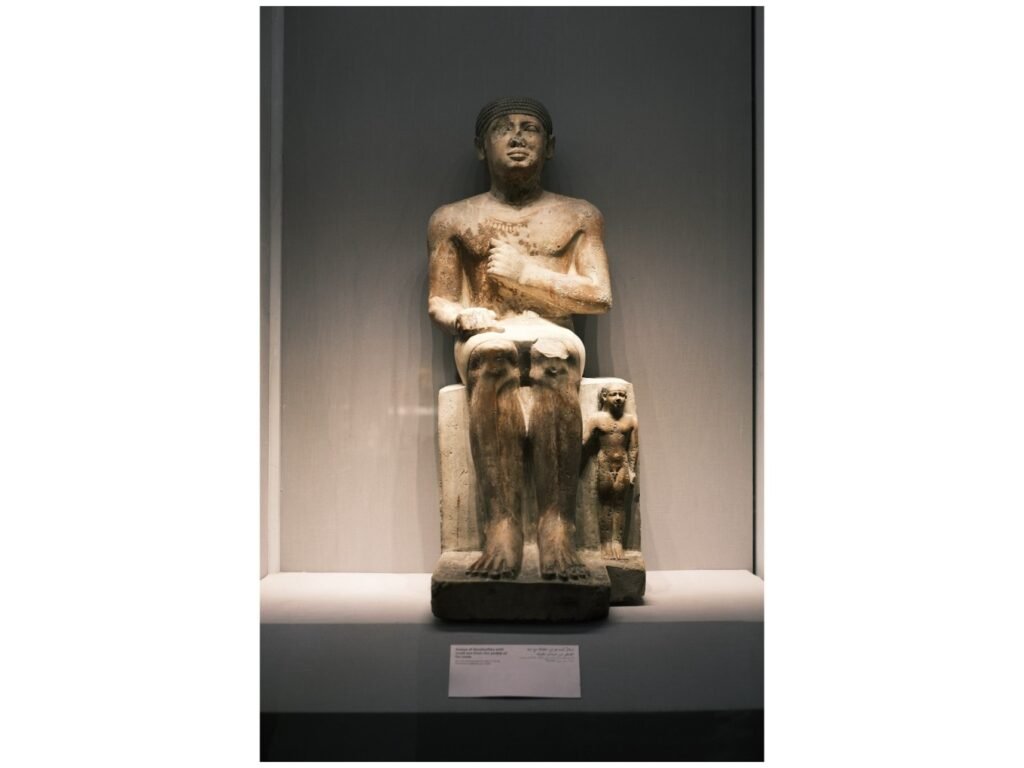
This statue comes from the tomb of Nenkheftka in Deshasha. Nenkheftka was a local official. Independent statues like this one are typical features of Old Kingdom (circa 2613-2160 BCE) tombs. Tombs usually had a dedicated statue chamber, often referred to as a “serdab.” Statues like the one displayed here were meant to preserve the memory and personality of the deceased, allowing their soul to reside in the statue even if their body was destroyed. During the 5th Dynasty (circa 2494-2345 BCE), it was rare to find statues like this one from tombs outside the capital, Memphis.
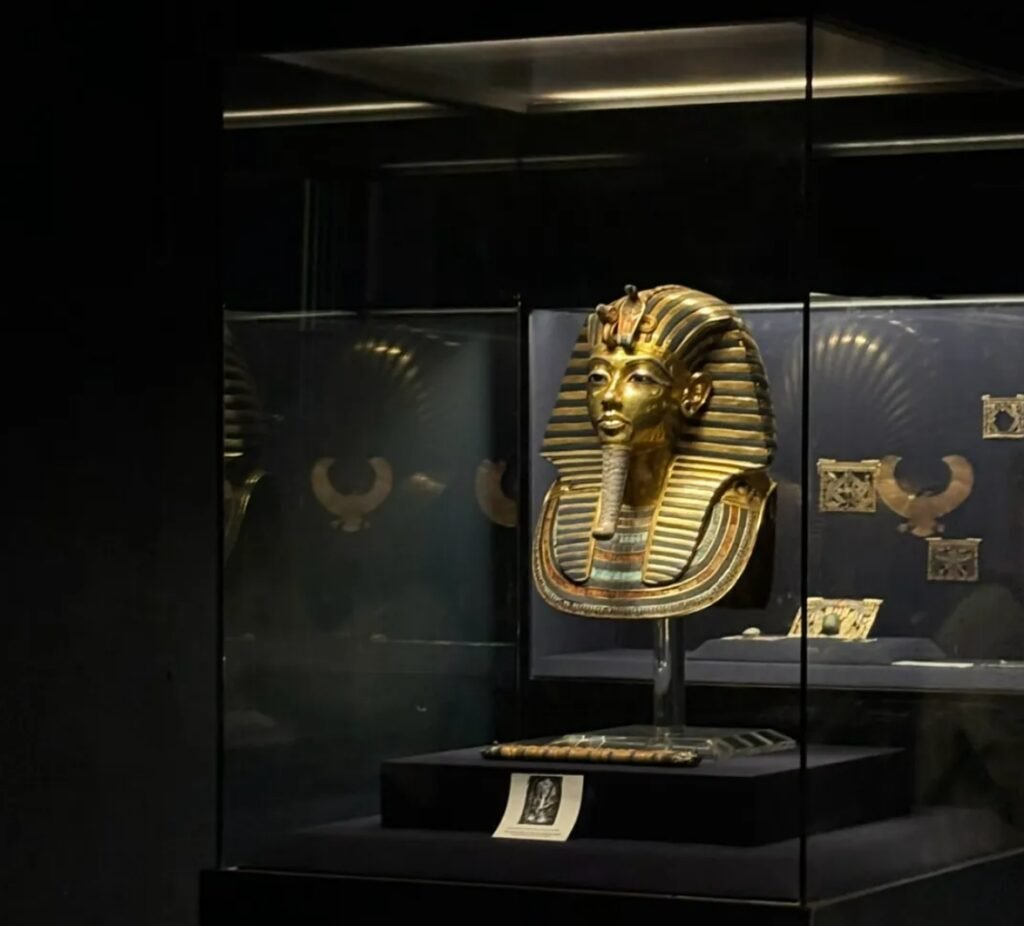

Tutankhamun’s golden mask is widely regarded as one of the finest masterpieces in human history, ranking first among the world’s ten most priceless treasures. The mask is made of gold leaf, inlaid with gemstones and colored glass, and weighs 11 kilograms.
On its forehead, it features the vulture god and cobra goddess, symbols of protection and divine authority, with a braided beard hanging below. The mask covered the face of Tutankhamun’s mummy, perfectly capturing his facial contours and conveying a piercing gaze.
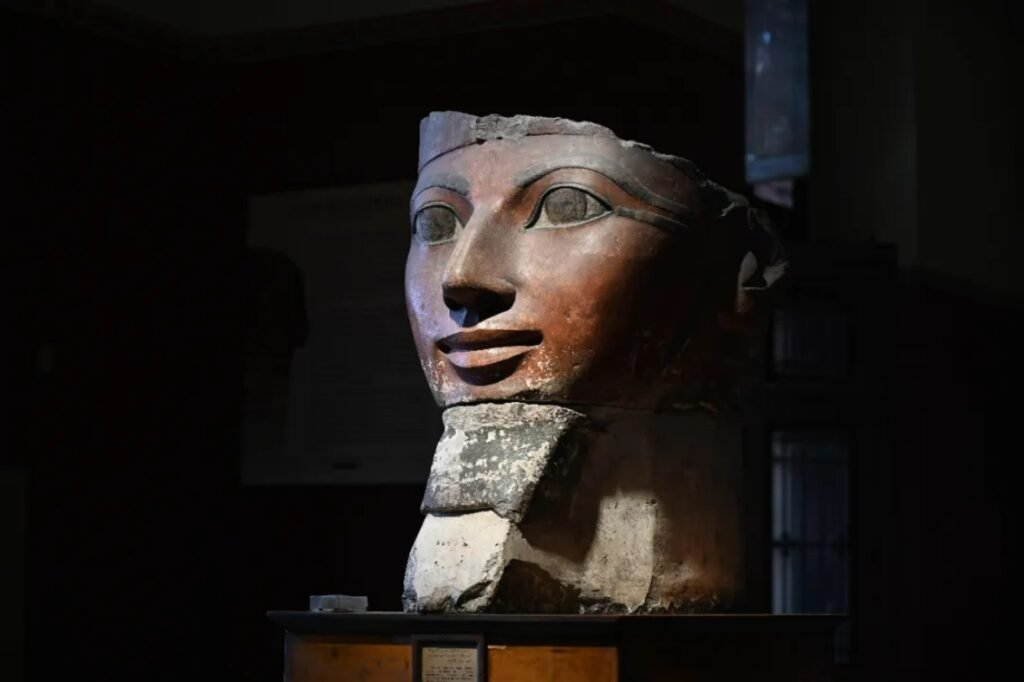
Hatshepsut (circa 1507–1458 BCE) was the most successful female pharaoh to rule ancient Egypt. She was the third woman in Egypt’s 3,000-year history to govern the land as a “king.”
Hatshepsut achieved unprecedented power, obtaining the full title and authority of a pharaoh. She was the first woman to fully realize the potential of the position, wielding absolute influence during her reign.
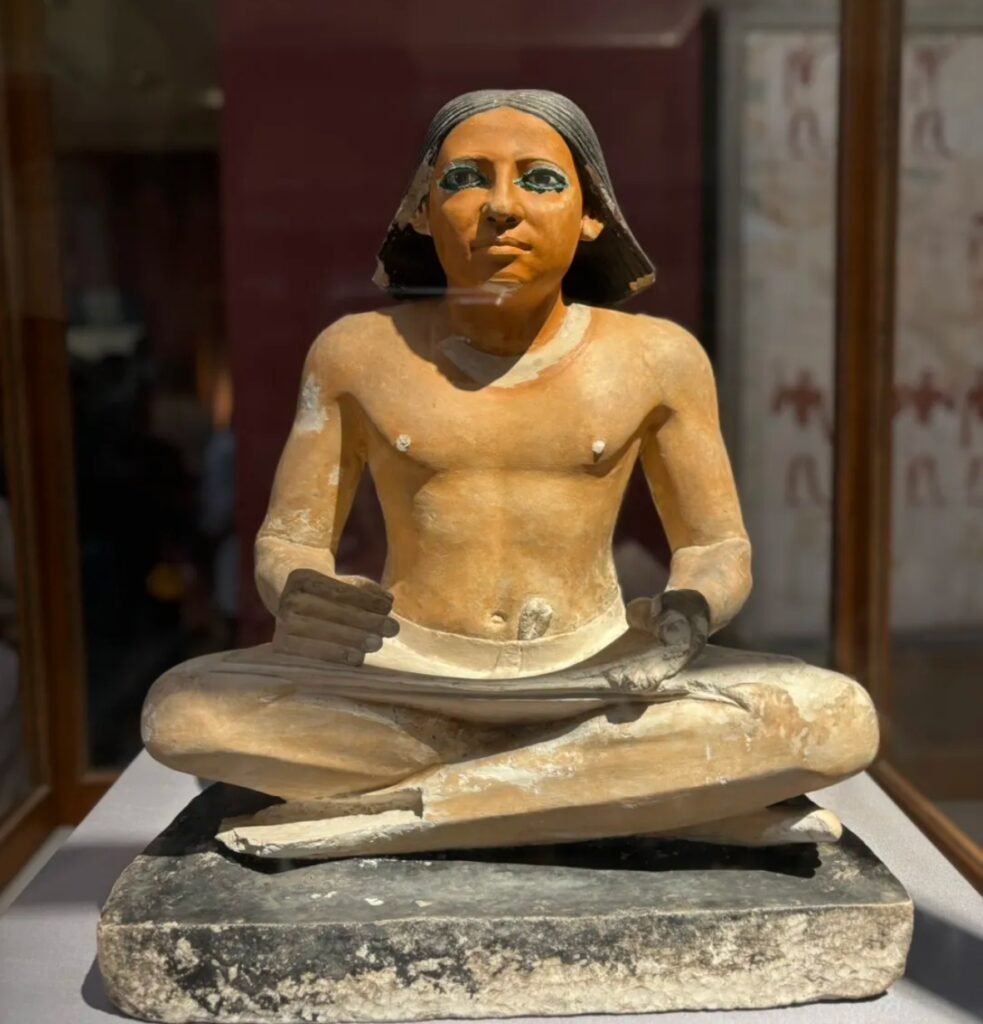
The scribe is depicted in a seated, cross-legged position, holding a scroll in his left hand and a pen in his right. Unfortunately, the pen was already missing when the statue was discovered.
Notably, the image of this scribe is featured on the 200 Egyptian pound banknote, reflecting the high regard in which it is held by the Egyptian people. This underscores the importance of scribes in ancient Egyptian culture, symbolizing knowledge and literacy.

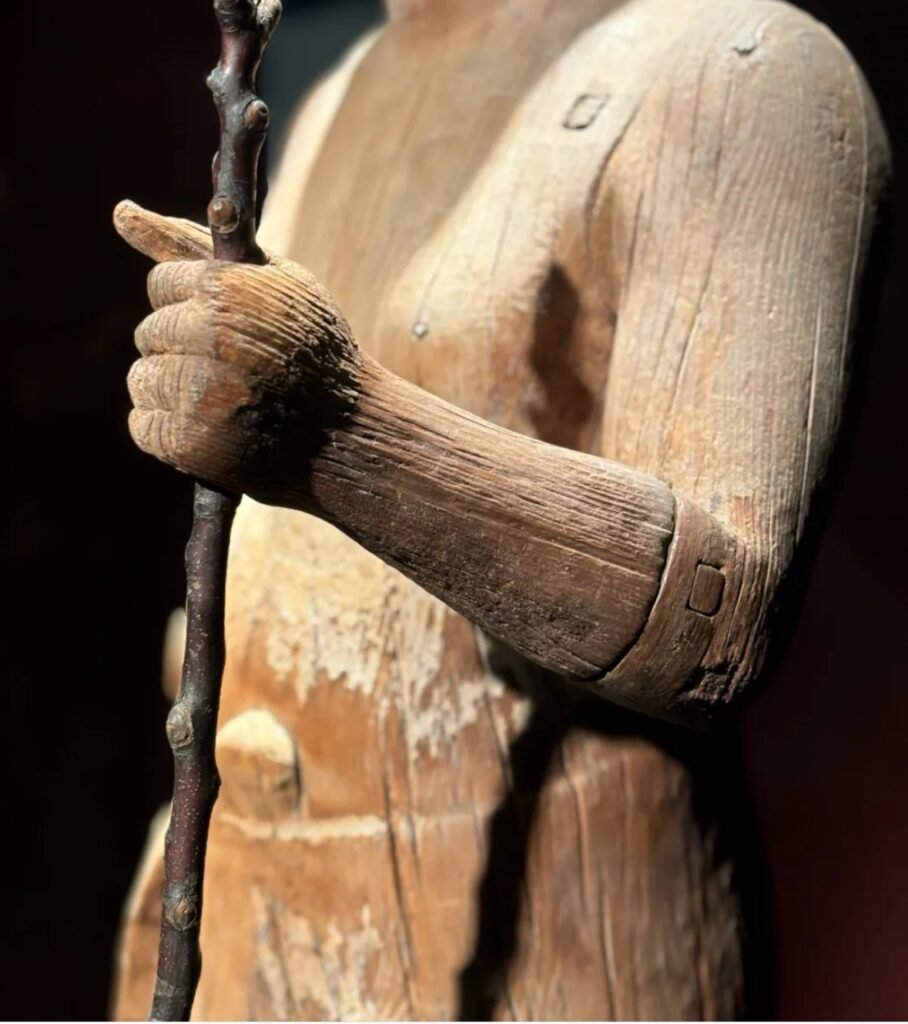
This wooden statue dates back to the Fourth Dynasty of ancient Egypt and was discovered during Mariette’s archaeological excavation from the tomb of Prince Kaaper, after whom the statue is named. According to legend, when the statue was unearthed, a local farmer exclaimed, “Isn’t that our old village chief?” This gave the statue its popular nickname—”The Old Village Chief.”
The story highlights the lifelike and realistic quality of the statue. Prince Kaaper is depicted standing upright, holding a staff in his left hand while his right arm hangs naturally at his side. He steps forward with his left foot, his gaze intense and full of confidence, exuding an air of authority and self-importance.
The craftsmanship is exceptionally vivid, with the prince’s round face featuring a small nose and thick lips slightly curled upward. His slightly protruding belly further emphasizes his privileged, leisurely lifestyle. The realistic details bring the character to life, capturing both his noble status and the arrogance that accompanies it.
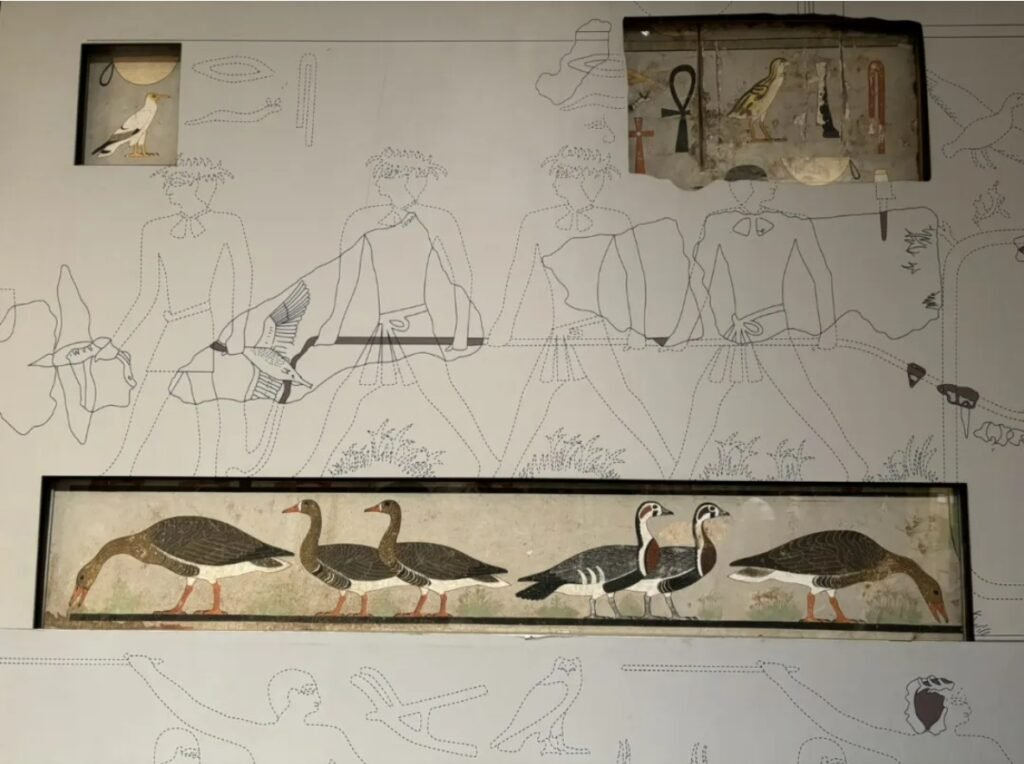
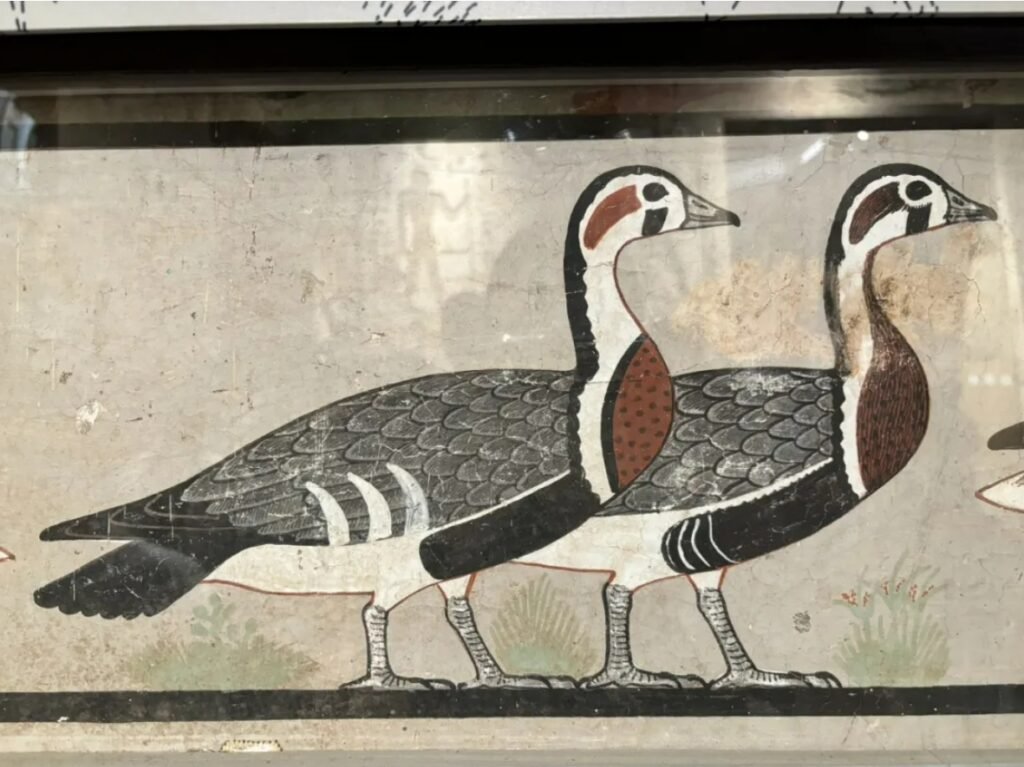
The Meidum Geese mural, a precious piece of ancient Egyptian art, was unearthed from the tomb of a prince dating back to around 2500 BCE. Remarkably, the colors remain vibrant and well-preserved to this day.
The geese depicted in the mural are strikingly lifelike, making it one of the earliest known masterpieces of realism. While animal scenes are commonly found in ancient Egyptian tombs, no other mural discovered so far matches the artistic excellence of the Meidum Geese.

